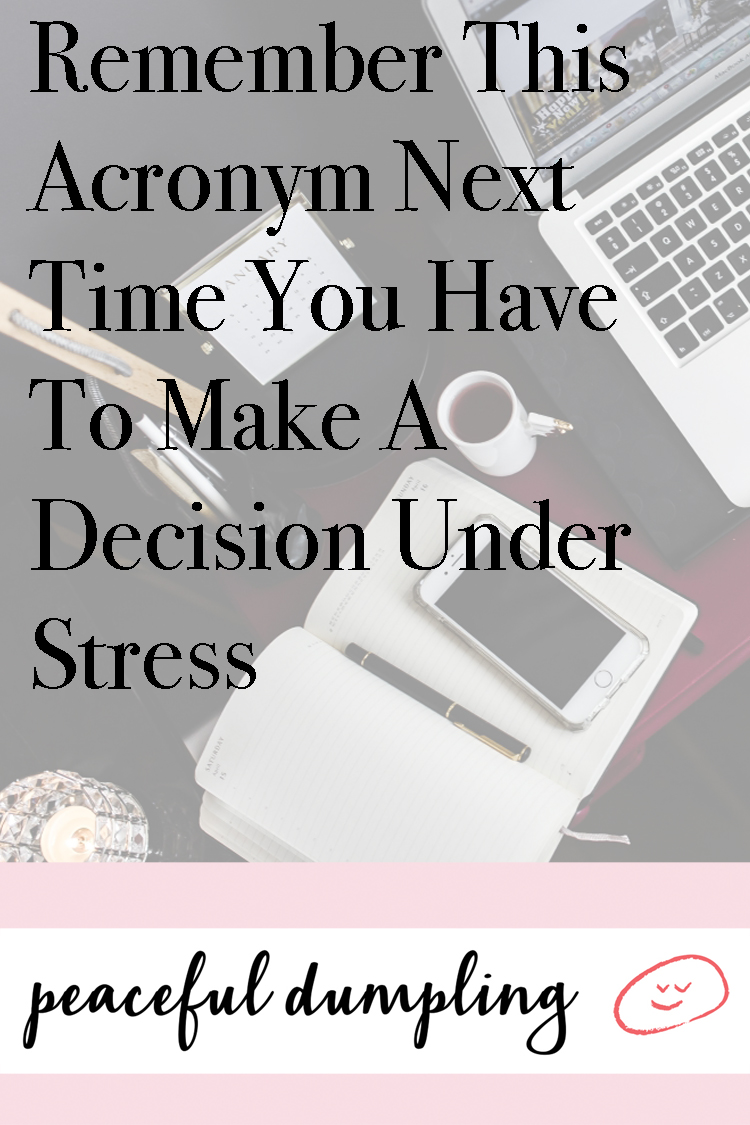When Captain Tammie Jo Shults needed to safely emergency-land Southwest Airlines Flight 1380 after an engine fan blade failed, causing the plain to decompress and a passenger to perish, the former Navy flight instructor pushed any fear away and focused on the best possible outcome. She was successful.
For many of us, myself included, a stressful situation–even when it’s not life-threatening–can send us into a spiral of doubt and panic. In my case, I can become paralyzed by a stressful decision if I’m not careful–I freeze up and fail to act in a productive or efficient manner, and my self-doubt deepens with every potential action I contemplate. Meanwhile, the clock is ticking.
Cleary, I would benefit to take a page from Captain Shults’ book. Psychiatrist Dr. Samantha Boardman analyzed the Shults’ situation and shared this insight:
“A staple of fighter-pilot training is OODA: observe, orient, decide, act. OODA provides a clear-cut strategy to optimize a response in a stressful situation. It is based on information, not emotion. OODA has applications beyond the cockpit. Next time you find yourself in a challenging situation, instead of spiraling into panic mode, observe what is going on around you, orient yourself to what is most important, decide on a plan of action, and act on it.”
As someone who usually decides largely with her heart (and often “asks her dreams” for guidance before bed), limiting the decision-making process to information only is a novel idea to me. My emotions and intuition haven’t led me too astray (thus far!), and I still believe that they’re an important part of some decision making, but if you’re like me and you find yourself getting paralyzed by stress, focusing on only the information surrounding a decision could be an excellent way to shutdown the emotional stress cycle and actually do something.

How to Use OODA
In addition to use in military decisions, OODA has played a role in law enforcement, litigation, and business, which suggests that it’s applicable in multiple everyday settings. Here’s a breakdown of each step, simplified for non-combat situations.
Observe
Simply figure out what is going on. Sometimes a stressful situation can give us quite a shock and put us in utter confusion. Pause, observe what’s happening, observe and acknowledge your feelings–and now set them aside.
Orient
Focus on what’s most important–and where you can actually effect change or a solution.
Decide
Come up with a plan you can act on now that’s within the range of possibility.
Act
Once you’ve decide on a plan, commit to it and do it.

While these steps are certainly easier said than done in some cases, they’re worth exploring if you often find yourself frozen when you need to act. If you’re under continual stress, think of OODA as an ongoing loop in which you reorient yourself as needed to make and act on a series of decisions.

What was the last stressful situation you had to navigate?
Related: Science Says Do These 6 Soothing Things Next Time You’re Super Stressed
Stressed Out To Pieces? This Ancient Thai Wellness Ritual Might Work For You
4 Yoga Sitting Poses That Will De-Stress You Instantly
Get more like this—Subscribe to our daily inspirational newsletter for exclusive content!
__
Photo: Kaboompics
